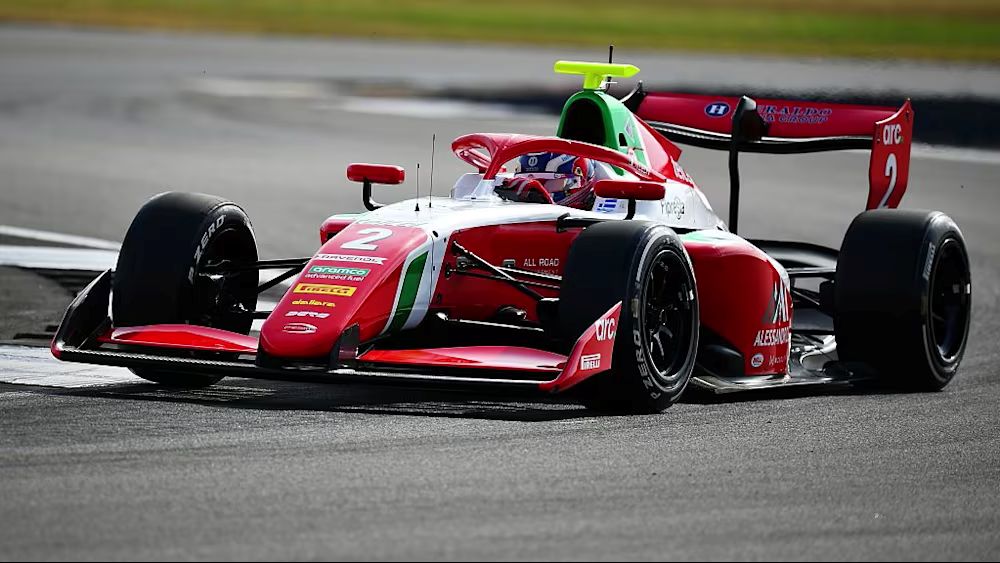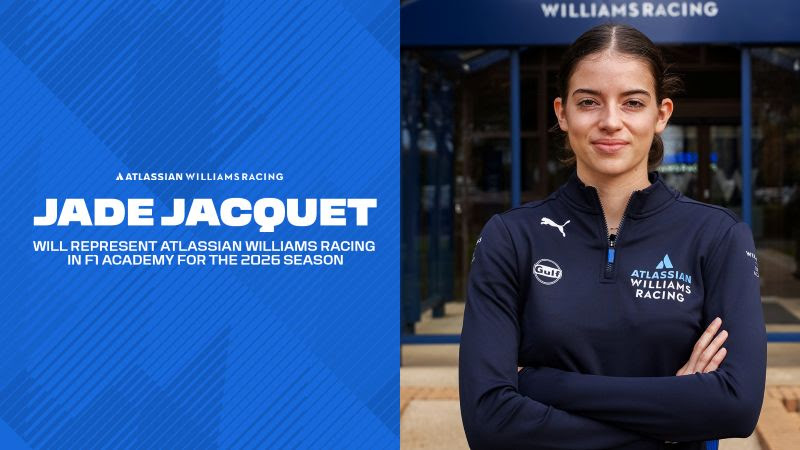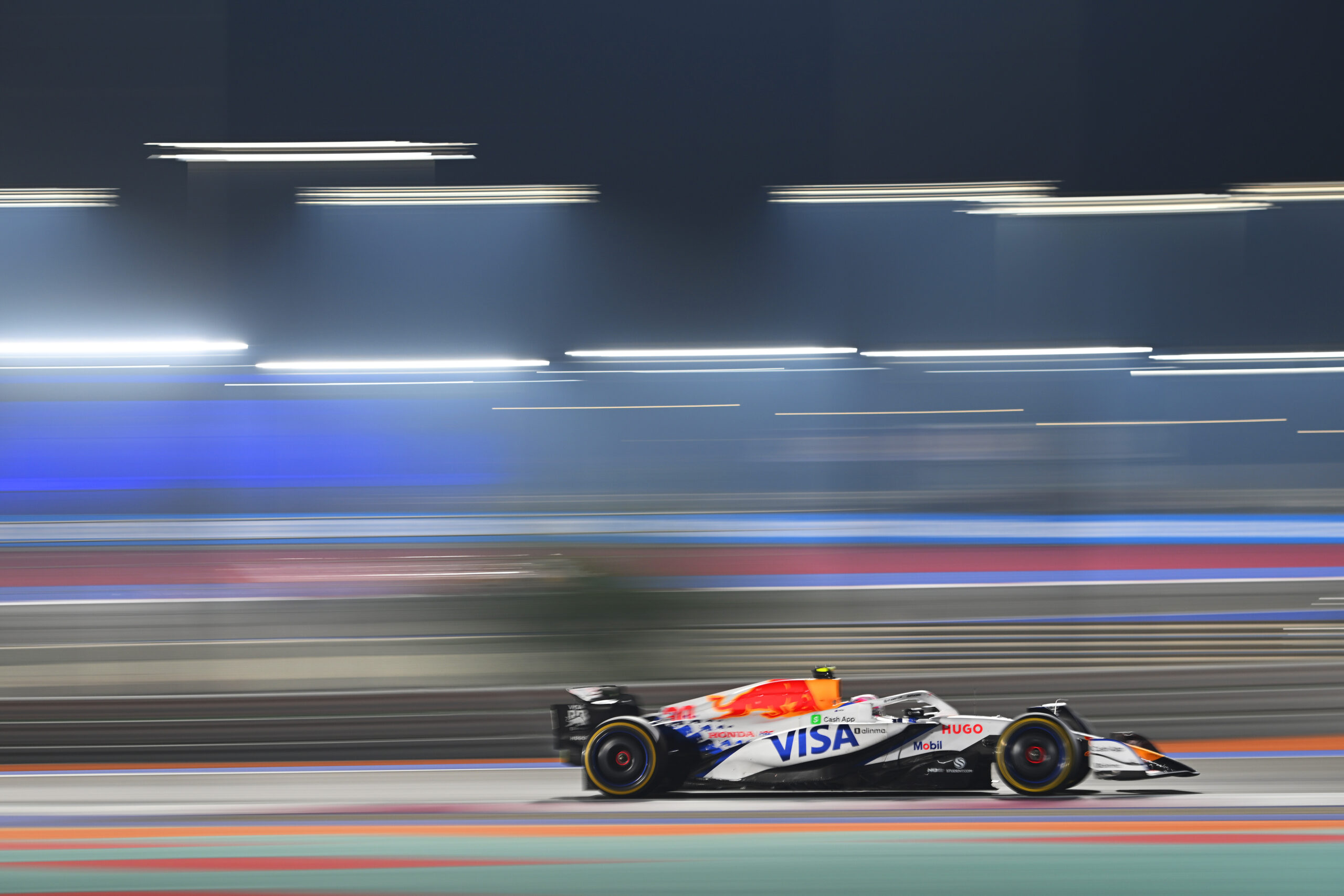Noel León raced his way to P3 at the F3 British GP, securing his best result of the season thus far. After a rough season, matters seem to be improving for the young PREMA driver, as he grabbed his first podium in Silverstone last race weekend. After the British GP, the 20-year-old spoke to media about adapting to F3 and the learning curve of racing.
“It’s actually quite difficult to describe, but I’d say overall it’s quite smooth but sometimes aggressive. Sometimes that is not good for the races and for the degradation of tyres, but overall, I go up step-by-step when we push, we’re pushing, when we need to learn, we learn. So yeah, overall, quite a smooth driving style.”
Strengths and lessons as a driver
This year marks León’s second season competing in Formula 3 as he spent 2024 with Van Amersfoort Racing. The Mexican driver finished last season tenth in the driver standings and was hopeful for an even better season with his new team, PREMA. Despite this, PREMA has been experiencing struggles with the pace of the car, which in turn made the first half of the season difficult for its drivers. Recently, the team look to be going in the right direction and appear to be improving.
The young driver spoke candidly about his strengths and focus as a driver, expressing:
“I’d say my biggest strength as a driver is being able to adapt quickly to the tracks. I learn quickly and it’s normally in the first laps – they’re quite strong for me. It’s always been like that, straight on it.“
“Over the years, the biggest thing I’ve learned is that you need to build your fastest on the first lap. Obviously, you do want to be fast from the first lap. But you need to build your weekend, your session. That way, you will learn more from it, and you will extract the pace of the car and of the overall package during the run, because if you start to push too early, by the end of the day, you don’t learn, you are just pushing as much as you can.
Then for the race, it’s difficult to improve. And that’s what was happening to me at the beginning, when I was little in karting, I was pushing super early, so then to improve from where I was ending up in practice, it was difficult because I was already just pushing as much as I could.”
Adapting to Formula 3
León currently sits seventeenth in the FIA F3 Drivers Championship with 21 points. While the start of the season did not go to plan, there are still three more races to go. The Mexican driver opened up about his racing and the difference from F3 to other series, stating:
“F3 is a different story. In FP, you want to be quick straight away, because you don’t do a lot of laps. You do more or less four laps in FP. So you don’t want to be so far off at the beginning, but still, you need to build your session, because if you destroy the grip of the tyres at the beginning, then again, you don’t have more grip available to go faster.
It’s always a compromise. So how much you push at the beginning to still have good grip in the tyres when the track gets better, it’s always a compromise.“
The 20-year-old continued on to reflect on the previous year in Formula 3, emphasizing the importance of experience. While last year offered more points for the driver, this season could be a bigger lesson for dealing with the ups and downs of racing.
“I think last year, I was really, really good adapting to the tracks, because obviously I was racing in other championships, so most of the tracks I didn’t know. And the ones I did know, I didn’t have a lot of experience on it.
Prep was really important with the team to really arrive and be on it on the first laps. And I was quite good last year on that. So I’m trying to keep that but now I have a bit more experience on the tracks and with an F3 car.”
Experience essential to gain lap time
The PREMA driver spent parts of his early racing career driving in North America before moving on to race in Europe. The 20-year-old revealed that experience is crucial on the European tracks in order to improve, stating:
“When you have been driving in Europe your whole career, you have already completed so many laps on the tracks and in different cars. So you know more or less where you need to find time and where the big lap time gain or loss is.
You know where you can risk a bit more to gain that couple of tenths. And you know where you just need to do basic stuff, and it will be fine. You will probably lose half a tenth, and it’s okay, but there are some places that you can risk.“
Moreover, the Mexican driver dove into his driving style playing into conquering the diverse tracks in F3. Highlighting the necessity of finding a balance between a smooth drive and risk taking, the driver expressed:
“Also driving techniques. It’s different cars, different tyres, different everything. But at the end of the day, the philosophy, the layout of the track and your style doesn’t change.“
“It’s difficult because you don’t want to be too smooth, because then you probably, you will end up in the midfield. Sometimes in F3, you’ll end up with a Red Flag or Yellow Flag and get caught out because then you don’t have a lap time, so obviously that first push needs to be at the 95% of the package you have.
You start to take a bit more risk every lap, and then you build from there.”





